
Compilation Album
The Fresh Sounds From Liverpool (OR 7060)
(Update: 4th. July 2022)



| TITLE | THE FRESH SOUNDS
from LIVERPOOL |
|||||
| CATALOG NUMBER | OR 7060 |
|||||
| RELEASE DATE | 15th August 1964 / First Press | |||||
| TRACK LISTING | SIDE 1 | SIDE 2 | ||||
| I Want To Hold Your Hand (The
Beatles) |
Please Please Me (The Beatles) |
|||||
| Glad And Over
(The Dave Clark Five) |
Bits And Pieces
(The Dave Clark Five) |
|||||
| Hippy Hippy
Shake (The Swinging Blue Jeans) |
Good Golly Miss Molly (The Swinging Blue Jeans) | |||||
| Little Children (Billy J. Kramer With The
Dakotas) |
I'm In Love (The Fourmost) |
|||||
| A World Without Love (Peter And Gordon) |
Little Bitty Pretty One (The Paramounts) |
|||||
| Just One Look (The Hollies) |
I Love You Baby (Freddie And The Dreamers) |
|||||
| I Like It (Gerry And The Pacemaker) | 5-4-3-2-1 (Manfred Mann) | |||||
| FRONT --> Click! | BACK --> Click! | SIDE 1 --> Click! | SIDE 2 --> Click! | DISK | ||
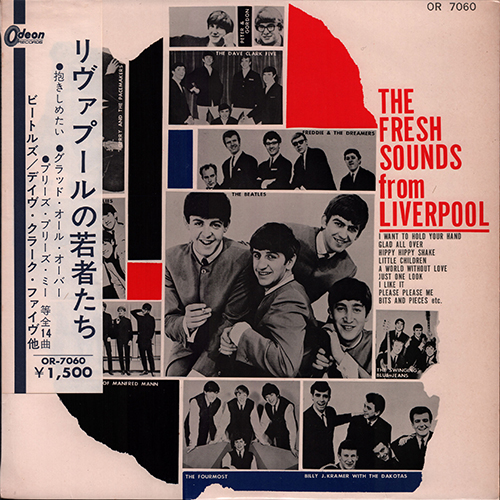 |
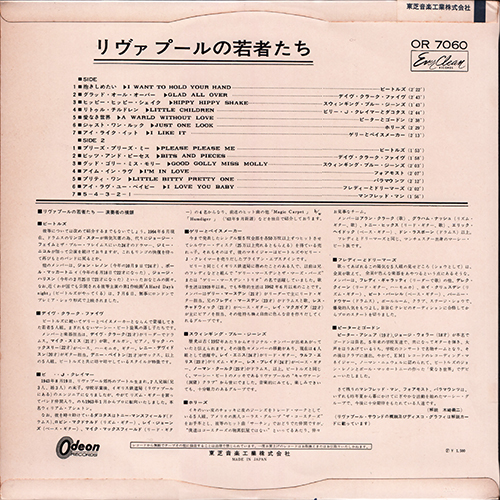 |
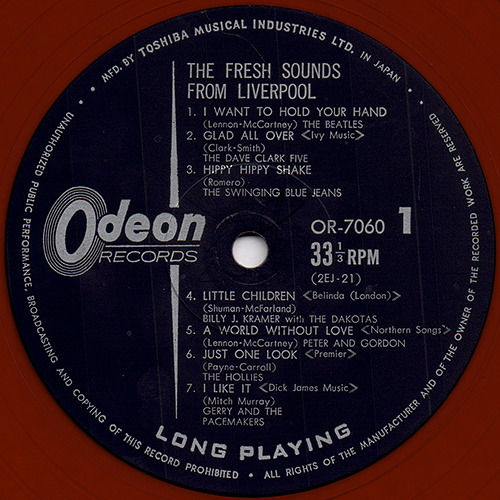 |
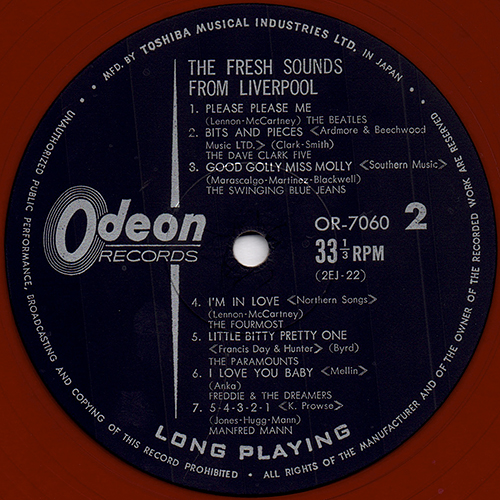 |
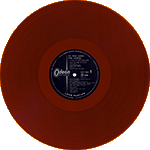 |
||
| INNER SLEEVE | ||||||
| FRONT --> Click! | BACK --> Click! | INNER SLEEVE CLOSE UP |
||||
 |
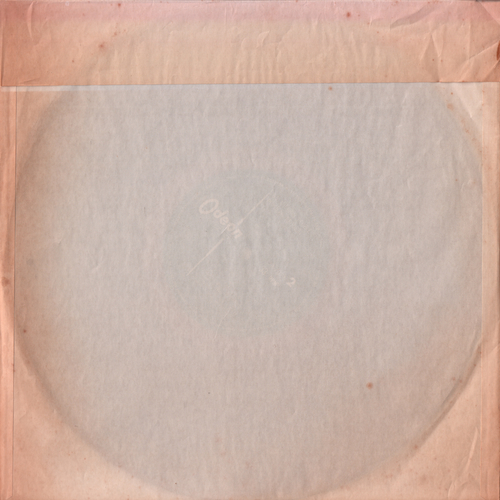 |
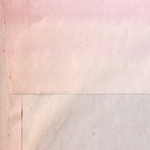 |
The original plain white inner bag has a fold-over flap at the top of the bag to prevent the record from falling out. | |||
| LYRIC SHEET (Bifold
Type) |
||||||
| P1 --> Click! | P2 --> Click! | P4 --> Click! | The
lyric sheet is bifold type. |
|||
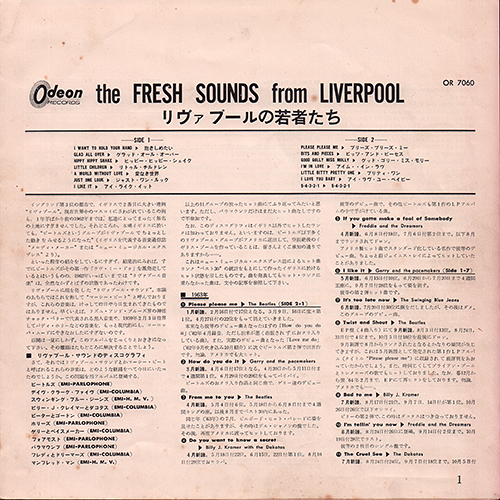 |
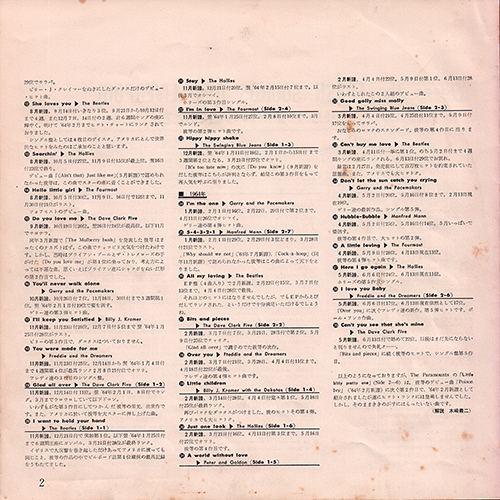 |
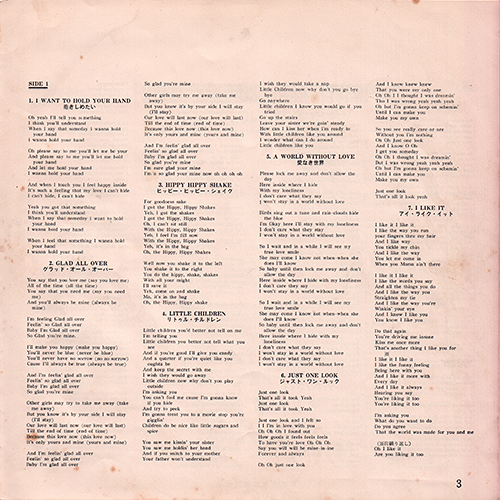 |
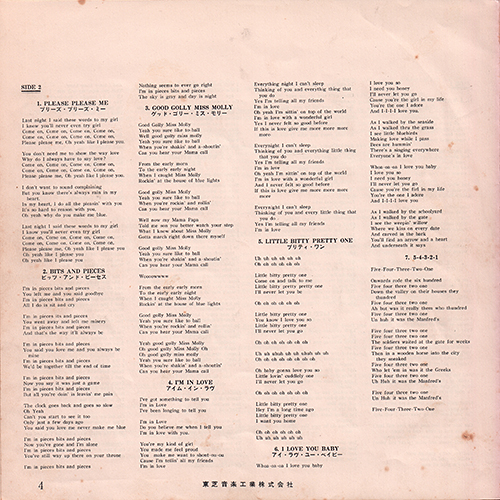 |
|||
| LYRIC
SHEET (Bifold Type) CLOSE UP |
||||||
 |
 |
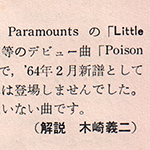 |
Catalog number "OR 7060" and "Toshiba
Musical Industries Ltd." were printed on the lyric sheet. liner notes: yoshiji Kizaki |
|||
 |
 |
|||||
| "HANKAKE" OBI CLOSE UP | ||||||
| FRONT --> Click! | BACK --> Click! | |||||
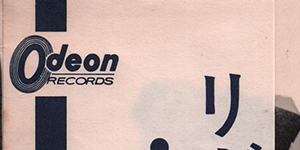 |
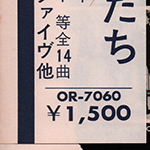 |
 |
||||
| In the early 1960s, a short-lived hankake obi, or “half obi” was used. These were small strips of paper that simply folded over the top of the cover. | ||||||
| FRONT COVER CLOSE UP | BACK COVER CLOSE UP | |||||
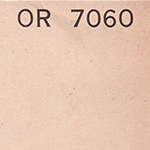 |
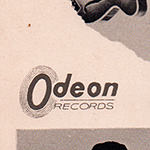 |
The original plain white inner bag has a fold-over flap at the top of the bag to prevent the record from falling out. | 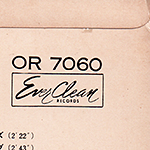 |
Toshiba pressed a lot of their records on red, “Everclean” vinyl. The Everclean vinyl wasdesigned to be less prone to collecting static electricity and dust than the more common black vinyl. | ||
| BACK COVER CLOSE UP | ||||||
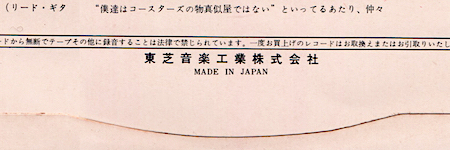 |
"Toshiba Musical Industries Ltd." and "MADE IN JAPAN" were printed at the bottom of the back cover. | |||||
| BACK COVER CLOSE UP | ||||||
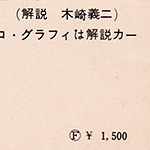 |
"F ¥1,500" was printed at the bottom of the back cover. |  |
This record contains two songs "I Want To Hold Your Hand (side-1)" and "Please Please Me (side-2)" performanced by The Beatles. | |||
 |
||||||
| LABEL CLOSE UP | ||||||
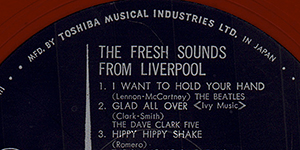 |
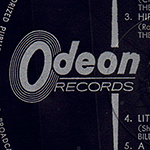 |
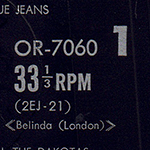 |
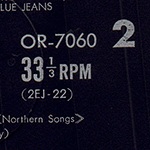 |
|||
| Toshiba
pressed a lot of their records on red, "Everclean" vinyl
from 1958 through 1974 (maybe). The Everclean vinyl
was designed to be less prone to collecting static
electricity and dust than the more common black vinyl. The
words "MFD. BY TOSHIBA MUSICAL INDUSTRIES LTD. IN JAPAN" was
printed at the perimeter. Catalog number and matrix number were printed at the right side of the center hole. |
||||||
| LABEL CLOSE UP |
||||||
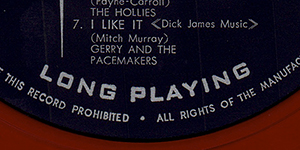 |
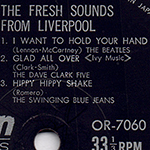 |
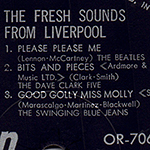 |
The words "LONG PLAYING" was printed at the bottom of the label. This record contains two songs "I Want To Hold Your Hand (side-1)" and "Please Please Me (side-2)" performanced by The Beatles. | |||
|
OTHER ITEM
|
||||||
| - |
||||||
| RECORD LABEL | Odeon Label Type-1 (with the words "LONG PLAYING") | |||||
| MIX | MONO |
|||||
| MATRIX No. | SIDE 1 | 2EJ-21 3 |
||||
| SIDE 2 | 2EJ-22 3 |
|||||
| PRESS MARK |
G4 |
|||||
| VINYL COLOR | RED | |||||
| RECORD COMPANY'S NAME | SLEEVE |
Toshiba Ongaku
kogyo Kabusikigaisha |
||||
| LABEL |
MFD. BY TOSHIBA MUSICAL INDUSTRIES
LTD. IN JAPAN |
|||||
| SYMBOL/PRICE | F ¥1,500 |
|||||
| LYRIC SHEET STYLE | Bifold Type |
|||||
| COVER FORM | Single type. Full laminated soft cover. Twin-flipback cover (round type) |
|||||
| INNER SLEEVE |
Plain white inner bag |
|||||
| OBI | "Hankake"
Obi White in design with dark blue Japanese text. Obis draped from the top, not forming a loop. |
|||||
| COVER DESIGN/ PHOTO/ NOTES | liner notes: yoshiji Kizaki |
|||||
|
COMMENTS
|
Black Odeon label with
silver print. The words "LONG PLAYING" was printed at the bottom of the label. This is a compilation album of the fresh groups from Liverpool. Toshiba Musical Industries Ltd. (EMI Music Japan) at that time focused on this Liverpool sound. In 1964, Toshiba independently edited the omnibus LP "The Fresh Sounds from Liverpool" which collects songs from several British bands including the Beatles. This record contains two songs "I Want To Hold Your Hand (side-1)" and "Please Please Me (side-2)" performanced by The Beatles. Red vinyl: Besides good sound and quality printing, Japanese records also offered some other things of interest to the collector. One of the primary manufacturing companies in Japan, Toshiba, pressed a lot of their records on red, “Everclean” vinyl from 1958 through 1974 (maybe). While not pressed as collectors’ items, these red vinyl pressings are more sought out by collectors than their black vinyl counterparts. The Everclean vinyl was designed to be less prone to collecting static electricity and dust than the more common black vinyl. The obi: A. K. A."Hankake" Obi It is made from very thin paper stock. It is white in design with dark blue Japanese text. It also features an Odeon logo, catalogue number and price information. These were small strips of paper that simply folded over (glued) the top of the cover. While most Japanese records feature local music, a lot of music fans there like foreign music, as well. The language barrier in Japan presented a problem – should foreign album covers be changed for Japanese albums? The solution was the obi, which means “belt” or “sash”. The obi is a strip of paper, usually about two inches wide, that wraps vertically around the album cover, containing information about the artist and album in Japanese. As these strips of paper were fragile and easily torn, they are often missing, especially since consumers in the 1950s and 1960s attached little significance to them. Finding Japanese records made prior to 1970 that still have the obi intact can be quite difficult, and for some albums, nearly impossible. The inclusion of the obi can dramatically affect the price of some Japanese records, sometimes increasing the price by a factor of ten. While usually found in a wraparound strip, there are other versions of the obi that have occasionally been used. In the early 1960s, a short-lived hankake obi, or “half obi” was used. These were small strips of paper that simply folded over the top of the cover. These were problematic for retailers, as they tended to easily fall off of the record. |
|||||
